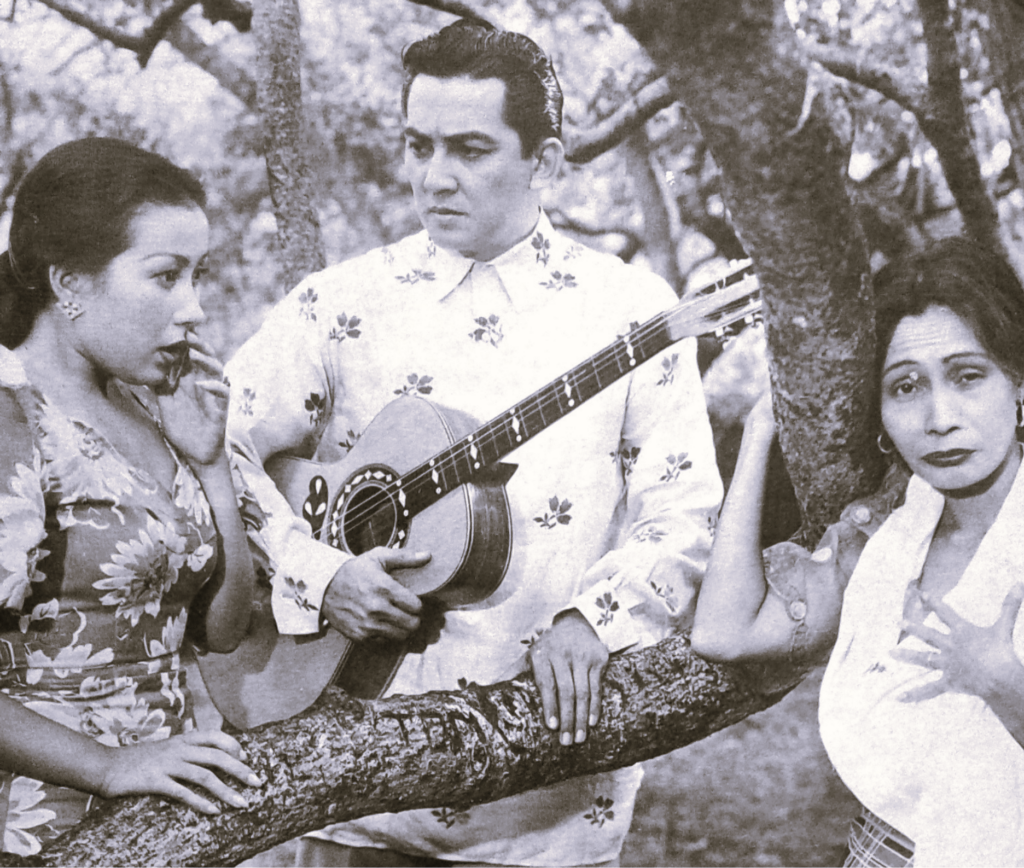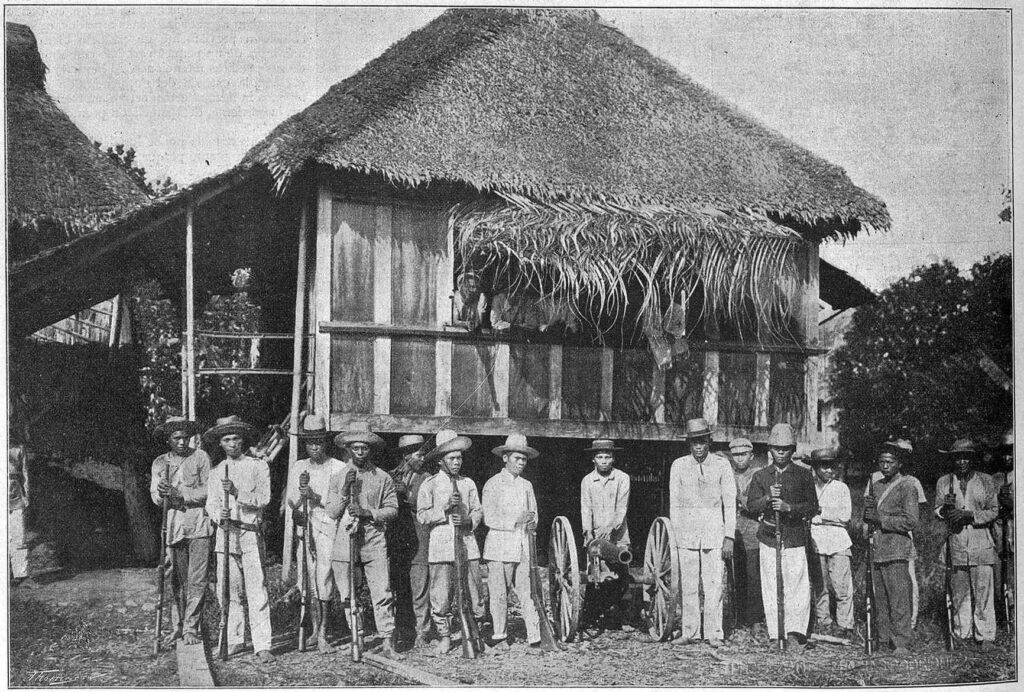Feminine Foremothers and the Cinematic Construction of the Dalagang Filipina
ABSTRACT: The discourse on Philippine cinema has been predominantly shaped by a masculine perspective, with critical acclaim and scholarly focus primarily directed toward male filmmakers associated with Philippine cinema’s so-called “Golden Ages.” Such tendencies have overshadowed the contributions of women on and off-screen. This essay highlights a previously unacknowledged feminine film tradition in Philippine cinema. Using Luce Irigaray’s concept of a “female imaginary and a female symbolic” as a framework, I focus on three influential female producers—Narcisa “Doña Sisang” de Leon, “Mother” Lily Monteverde, and Charo Santos—who significantly influenced the artistic development of mainstream Filipino cinema by dictating the kinds of movies their respective studios produce and shaping the representation of the “Dalagang Filipina” (Filipino Maiden) on screen that mirrored the gender politics of the time. By examining their contributions, I seek to establish a “maternal genealogy” within Philippine cinema, recognizing these women’s impactful yet historically overlooked roles in fostering a feminine-oriented filmic tradition. Keywords: Philippine cinema, gender dynamics, female representation, feminist theory, female imaginary, female symbolic Introduction: A Historical Elision In her celebrated 1971 polemical essay, the distinguished art historian Linda Nochlin (2010) raised a provocative question: “Well, if women really are equal to men, why have there been no great women artists?” (p. 264). Nochlin’s ostensibly straightforward interrogation marked one of the initial articulations addressing the conspicuous dearth of women within the artistic canon. She contemplates whether this absence substantiates the pervasive belief in the universal inferiority of women’s art or serves as evidence that prevailing standards for evaluating artistic works were fundamentally devised by men for men. Nochlin’s essay brings to light the inner workings of canon formation, exposing the unconscious acceptance of the male viewpoint as the default, thereby establishing an overtly masculine aesthetic paradigm in art that resulted in the marginalization and trivialization of women’s and, more broadly, feminine artistic practices. Her question has led to the realization that women’s engagement in art is not an unfettered, autonomous endeavor. On the contrary, artistic creation unfolds within a social context and remains substantially mediated and influenced by specific male-dominated institutions. Similarly, much of the discourse on cinema in the Philippines is informed by a masculine frame of reference. The corpus of scholarly literature on the history of Philippine cinema primarily concentrates on pivotal historical junctures, identified as “Golden Ages” (e.g., Lumbera, 1992, 2011; Sotto, 1992; Francia, 2002; J. David, 2018; Deocampo, 2023a). Each golden age is marked by a surge in artistic and creative works spearheaded by a cadre of predominantly male directors who emerged in each period. Lamberto Avellana and Gerardo de Leon are hailed as among the foremost auteurs of the First Golden Age in the 1950s. The Second Golden Age, from the mid-1970s to the 80s, is marked by the groundbreaking oeuvres of directors like Lino Brocka and Ishmael Bernal. Lastly, the rise of independent filmmakers such as Brillante Mendoza and Lav Diaz defined the Third Golden Age, which began in 2005 and lasted until the 2010s. This prevalence of a male-centric perspective can be attributed to the establishment of the Manunuri ng Pelikulang Pilipino (Critics of Philippine Cinema), the first and foremost film critics group in the country. Founded by a group of ten young men in 1976, the Manunuri has forged a framework for film assessment deeply rooted in Aristotelian realism, filtered through the lens of Soviet-era socialist realism and post-World War II Italian neorealism (see: Tiongson, 1983, 2001, 2010, 2013). Therefore, it is not surprising that the Filipino film canon is brimming with realist dramas about the everyday struggles of the working class, which are mostly made by male directors. Since it was established in 1976, the Manunuri releases at the end of each decade a list of ten films they acclaim as “Mga Natatanging Pelikula ng Dekada” (The Outstanding Films of the Decade). From the 1970s to the 2010s, there were only two female directors―Marilou Diaz-Abaya and newcomer Rae Red―whose films made the list. Furthermore, more than half of the fifty films on the list are realist dramas that explore themes of poverty and social injustices. Today, this seemingly masculine-oriented approach to film evaluation is not only practiced by the members of the Manunuri but has become the standard by which Filipino films are appraised by critics and studied by scholars and academics (e.g., Chua et al., 2014; Tolentino, 2014, 2016; Campos, 2016; Deocampo, 2022; Capino, 2023). The hegemony of realism and the masculine viewpoint has marginalized the study and critical examination of women both in front and behind the camera. Marilou Diaz-Abaya remains the only female filmmaker given serious attention by critics even though there has been a significant rise in the number of accomplished women directors in the past twenty years, e.g., Olivia Lamasan, Rory Quintos, Joyce Bernal, Cathy Garcia-Sampana, Antoinette Jadaone, and Irene Villamor1. On the other hand, the study of women onscreen has been mostly limited to the character stereotypes in countless melodramas, such as the girl next door, the submissive wife, the suffering mother, or the object of male sexual desire (e.g., E. Reyes, 1989, pp. 43-49; Tolentino, 2000; Gutierrez, 2009; J. J. David, 2015; Sanchez, 2015; Deocampo, 2023b, 2023c). As such, there is an obvious lack of female figures for film scholars and artists to study, read, engage with, or regard as role models or innovators. It was Luce Irigaray (1993) who suggested that a “fully realized alterity” for womanhood and femininity can be achieved through the conceptualization of “a female imaginary and a female symbolic” including the recognition of a “maternal genealogy” (p. 71). This translates to a disengagement from the dominant discourse and the construction of a maternal genealogy, i.e., a matriline or “mother line” in Philippine cinema. In this essay, I address Linda Nochlin’s question by shedding light on the existence of a feminine film tradition that has operated alongside and, in many ways, affected the dominant masculine narrative. Adopting Luce Irigaray’s philosophy as a framework, my essay aims to establish the groundwork for recognizing a “female imaginary and
Feminine Foremothers and the Cinematic Construction of the Dalagang Filipina Read More »


